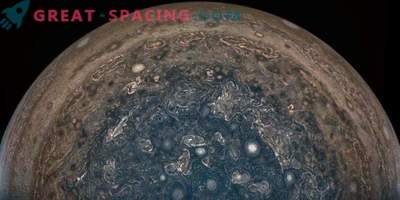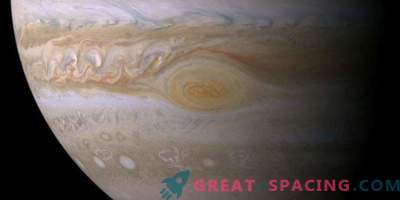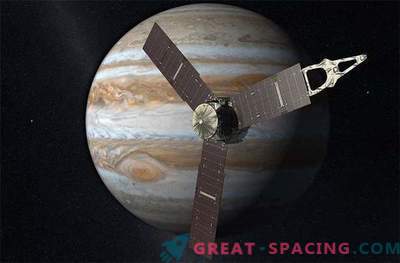
Juno's spacecraft, while examining Jupiter, on October 29, 2018, obtained a snapshot of the gas giant's clouds
NASA is returning to one of his favorite scientific activities - the study of the cloud formations of Jupiter. This is possible thanks to the spacecraft Juno, located in the orbit of the gas giant.
In June 2016, the probe went into orbit of the largest planet of the solar system, allowing you to extract a huge amount of data through the use of scientific tools baggage. In addition, the device is endowed with a camera, which introduces the general public with interesting features of Jupiter.
A specific photo was received on October 29 during the 16th flight of the ship above the surface at an altitude of 7000 km from the upper part of the cloud system of Jupiter.
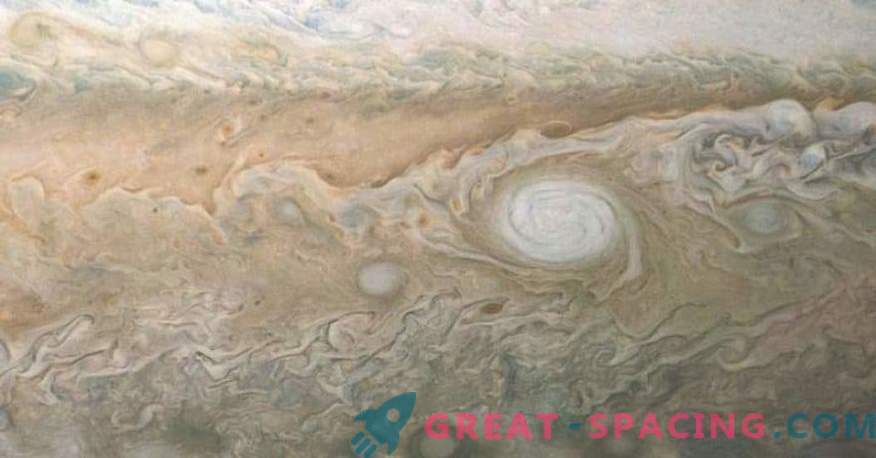
A photo of the atmosphere of Jupiter obtained by the Juno probe on September 6, 2018. Here you can carefully consider the anticyclone storm.
The Jet Propulsion Laboratory called the specific atmospheric pattern “Dragon's Eye”. The image shows Jupiter's North-North Temperate Zone (NNTB). The large white oval is a type of atmospheric knot, which is called an anticyclone storm. That is, in the outer edge of the storm, the winds blow in the opposite direction of the surrounding air mass. Smaller cloud structures are also noticeable. This is not the only anticyclone storm on Jupiter. The photo of September 6 shows a similar structure in the southern hemisphere of the gas giant.
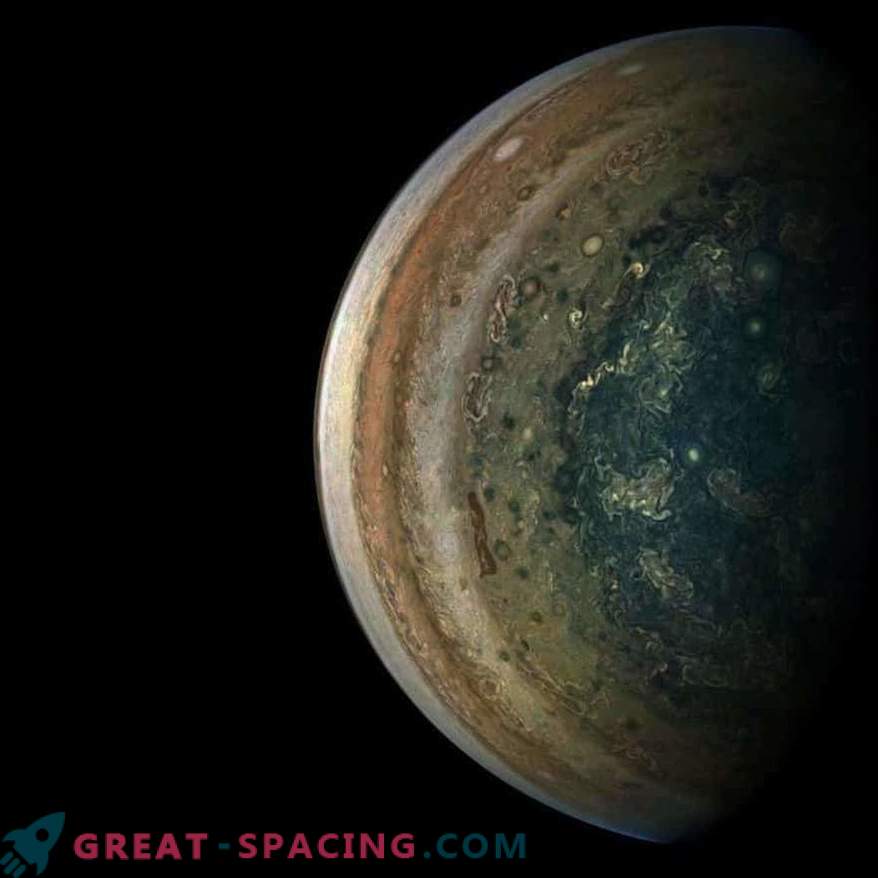
JunoCam also gets stunning footage of the planet when Juno moves away from Jupiter. This image was taken on September 6, 2018.
Earlier in 2018, NASA decided to expand the mission of Juno. Now the probe will remain in orbit of the gas giant until the summer of 2021. However, this expansion also suggests that the device will not be able to reach a shorter orbit, remaining at a greater distance (rotates every 53 days).



